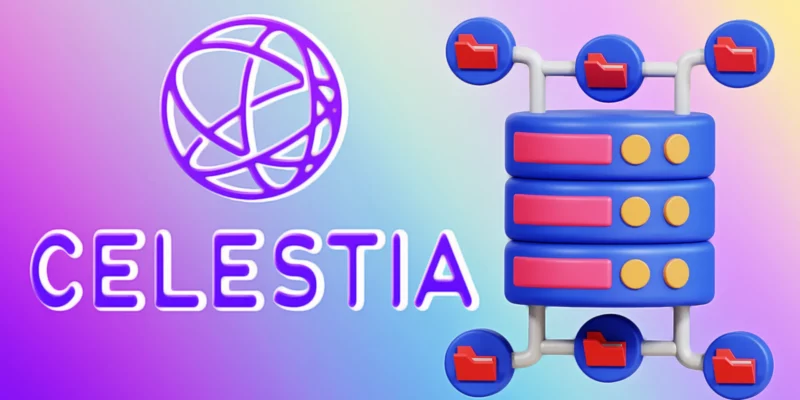- Celestia ensures the Data Availability (DA) solution to blockchains to enhance their scalability.
- DA is an essential component of the rollup feature.
The launch of Ethereum was marked by many crypto and blockchain enthusiasts as revolutionary and predicted that it might become the world computer one day. The existing features of smart contracts and dApps attracted several developers to the platform, ever-increasing its value and popularity. However several critics also discussed the promises a technology, which can process just a block of transactions at a time, would have in the future. Cryptokitties, a blockchain-based game by Dapper Labs, was released on the platform in 2017 and accounted for nearly 12% of all transactions. The DeFi ecosystem on Ethereum was already growing with the launch of several DEXs, stablecoins, and other tokens. Uniswap, a popular DEX, was already gaining admiration and further increasing network congestion.
All this led to Dapper Labs finding a new home for their kittens on the Flow blockchain and other dApps also searching for alternatives to Ethereum. The issue was simple, Ethereum prioritized decentralization and security over scalability. Scalability requires block space and this block space is scarce and expensive on the blockchain. People often confuse scalability with throughput. The most general solution that comes is, if a machine can process x transactions, then add another machine and make it 2x. However, people do not realize that in doing so, they also have doubled their installation costs. Scalability is to increase throughput, with little or no increase in existing machine cost. Rephrased, the single machine is capable of processing 2x transactions. Some earlier blockchains like EOS promised scalability and increased throughput, but later it became known that they demanded nodes to use hardware of increased capacities. Similarly, Layer2 scaling solutions of state channels and side chains were introduced. However, soon their vulnerability to security breaches and the final settlement of transactions still depended on the main chain. Further research on scalability led to sidechains taking the form of rollups where several transactions are rolled up (combined) into a single hash and broadcasted on the mainchain by committing it to a smart contract. The two most popular rollups out there are Optimistic rollups and zero-knowledge (zk) rollups. However, these rollups have just a missing piece, data availability, and that’s exactly where Celestia comes in.
Data Availability As The Backcone
Something that blockchains guarantee now and will always need to is data availability. This guarantee includes that when proposing a block, the proposer has published all the block data and that this data is available with all the network nodes. If not, a proposer may include a malicious transaction in the block and not publicize it. While the block is approved, considering only the visible valid transactions, this malicious also enters the blockchain, causing severe consequences. Blockchains depend on four functions to work, namely execution, settlement, consensus, and data availability. In traditional blockchains, all these functions were performed by a single layer which limited its throughput. Later modular stacks were released, which had different chains performing specific functions, and the functions were arranged in three different layers.

Celestia is the data availability (DA) layer which provides the missing piece to rollups and ensures that they function well. As it is a separate layer, it handles only the DA and consensus and leaves the settlement and execution to other layers. It simply orders and publishes any data thrown at it and performs no computation. It has two important features Namespaced Merkle Trees (NMTs) and data availability sampling (DAS).
Final Thoughts
Caldera, Eclipse, and Conduit, some of the Rollups-as-a-service products (RaaS), have started testing and working with Celestia. It is also helping the Optimism Labs to build their Optimistic stack which would include rollups from Conduit and Caldera. It is also working with Dimension, an EVM-compatible RollApp that uses Celestia for DA.








Comments